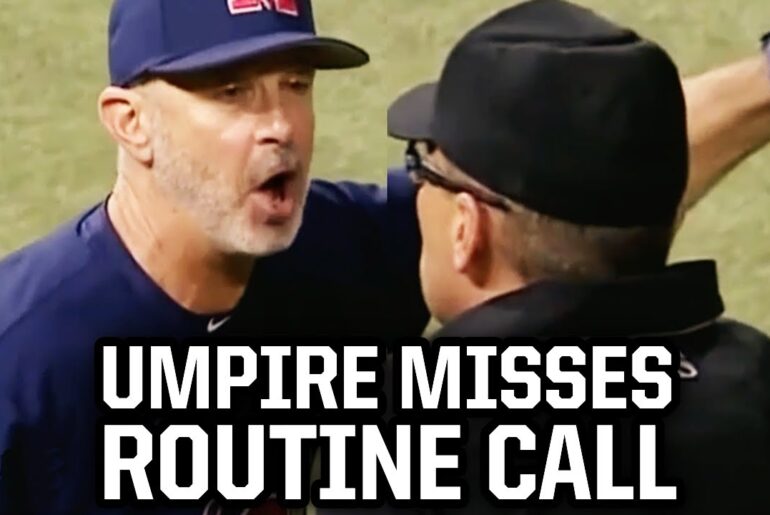As the pitcher delivered a breaking ball, it appeared to be at the top of the strike zone. However, the umpire deemed it a ball, much to the dismay of the batter and his team. The count now stood at one ball and one strike. The pitcher continued to mix up his pitches, featuring a low changeup and a high fastball, effectively working the zone. With a 3-1 count, a contentious cutter or slider came in, seemingly within the strike zone. Despite the batter’s claim of no swing, the umpire called it a strike, resulting in a full count. The subsequent pitch, a changeup below the zone, was deemed a ball, but the umpire believed the batter had swung. This disagreement triggered a heated exchange between the dugout and the umpire.
Interpretations and Disagreements
Unsurprisingly, opinions on the call varied depending on one’s perspective. Those with a vested interest in the game, whether as fans of the respective teams or players, tended to hold strong and opposing views. Third-party observers acknowledged the complexity of the situation, understanding that it was a close call due to the batter’s unconventional swing. Ultimately, the umpire’s decision and subsequent explanations left fans divided.
Examination and Intervention
Following the on-field dispute, the umpire maintained his stance, signaling the end of the confrontation. However, the batter, visibly frustrated, expressed his dissatisfaction as he walked to first base. He directed some choice words towards the umpire, prompting speculation about the nature of his comments. To gain further clarity, the team resorted to using iPads to review the contentious play. Players and coaching staff huddled around the devices, analyzing the footage in an attempt to understand the call.
Conclusion of the Inning
As the game moved forward, the batter returned to the plate with two outs. Regrettably, he was unable to make an impact, resulting in a groundout and ending the inning. Now, it was their turn to take the field, but tensions lingered. The frustrated batter approached the umpire to express his belief that he should focus and make accurate calls, particularly when the game hangs in the balance. However, instead of a calm discussion, the umpire swiftly ejected the player for his comments, further escalating the situation.
Escalation and Ejections
The ejection of the batter immediately attracted the attention of the pitching coach, who rushed to the scene to understand the unfolding events. Expressing his dissatisfaction with the umpire’s decision, he quickly found himself ejected as well. Now, the manager, infuriated by the turn of events, made his way to the field to confront the umpire. He criticized the decision, believing it to be unwarranted and displaying his displeasure towards the umpire’s actions. Consequently, the manager joined the growing list of ejections, resulting in three key figures being thrown out of the game.
Aftermath and Ongoing Debate
Despite the ejections, the dispute continued to captivate the attention of players, coaches, and spectators alike. The incident sparked conversations about the accuracy of the initial call, the appropriateness of the players’ reactions, and the umpire’s handling of the situation. Fans, analysts, and commentators weighed in on the incident, offering their own insights and perspectives.
Conclusion
The umpire’s controversial call and subsequent ejections have undoubtedly left a lasting impact on this baseball game. The incident, characterized by passionate exchanges and differing interpretations, highlights the intense emotions and high stakes present in the world of sports. As the debate rages on, it serves as a reminder that officiating decisions can have significant consequences, shaping the outcomes of games and leaving a lasting impression on all those involved.



